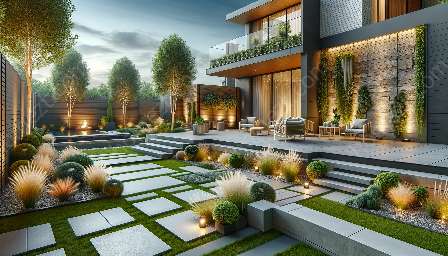When it comes to elevating the aesthetics and functionality of outdoor spaces, retaining walls play a crucial role. Whether you're looking to create terraced levels in your yard or provide structural support for your patio, retaining walls offer versatile solutions. In this comprehensive guide, we'll delve into the world of retaining walls and explore how they can transform hardscaping and elevate your outdoor experience.
Types of Retaining Walls
Retaining walls come in various types, each with its specific strengths and design possibilities. Gravity walls rely on their weight and setback to resist the pressure from behind, making them ideal for shorter walls. Cantilever walls use a slab and a base to support the load and are suitable for medium to tall walls. Anchored walls feature cables or stays that are anchored in the rock or soil behind the wall, providing robust support for tall or heavy walls. Additionally, crib walls consist of interlocking individual boxes made from timber or precast concrete and are commonly used for larger retaining applications.
Materials for Retaining Walls
The choice of materials for retaining walls greatly impacts the overall aesthetic and durability. Natural stone offers a timeless and organic look, with options like limestone, granite, and sandstone adding a touch of elegance to any hardscaping design. Concrete blocks provide a versatile and cost-effective solution, allowing for a wide range of color and texture options. Timber creates a warm and rustic charm, making it an excellent choice for a more natural and traditional look. Lastly, brick offers a classic and enduring appeal, suitable for both contemporary and traditional yard and patio designs.
Design Ideas for Stunning Retaining Walls
Retaining walls are not only functional but also possess the potential to become focal points of your hardscaping design. Incorporating curves and varying wall heights can add visual interest and create a dynamic landscape. Using different materials and textures can contribute to a multi-dimensional and visually appealing design, while integrating planters and lighting can further enhance the beauty and functionality of the walls. Furthermore, integrating seating elements into the retaining walls can transform them into comfortable and inviting spaces where you can relax and enjoy the outdoors.
Integrating Retaining Walls into Hardscaping
Retaining walls seamlessly merge with hardscaping elements, providing structural support and defining specific areas within the outdoor space. By incorporating retaining walls into your hardscaping design, you can create stunning terraced levels that not only add visual appeal but also maximize the usable space in your yard or patio. These walls also serve as ideal boundaries for outdoor living spaces, such as seating areas, fire pits, or outdoor kitchens, ensuring a seamless and well-defined layout for your outdoor entertainment.
Transforming Yards and Patios with Retaining Walls
When integrated into yard and patio designs, retaining walls offer endless opportunities to enhance the overall ambiance and functionality. From creating seamless transitions between different levels to providing opportunities for beautiful landscaping, retaining walls are a versatile tool for transforming outdoor environments. By carefully considering the design, materials, and placement of your retaining walls, you can achieve a harmonious blend of functionality and beauty, turning your yard and patio into captivating outdoor sanctuaries.


